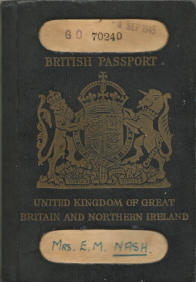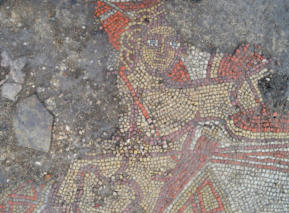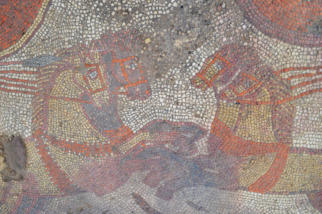Past Lectures, Study Days & Visits
2023/24 Membership year
19th March 2024
Steve King
The Story behind the Song
Save The Last Dance For Me was recorded by the Drifters in 1960, with Ben E King on
lead vocals, but what single event in the life of one of its writers inspired the track? Was
Every Breath You Take by The Police really written as a love song? What is the truth
about the Beatles song Lucy in the Sky with Diamonds, and why did George Harrison
stop composing for three years in 1976?
We all have personal memories we associate with individual songs, but each song has its
own story. In this lecture, the real stories behind some the world’s best known songs are
revealed.
20th February 2024
Valerie Shrimplin
Art & Astronomy - Sir Christopher Wren: Architect-Astronomer
Having designed St Paul’s Cathedral and more than 50 other London Churches after the
Great Fire of London (1666), Sir Christopher Wren is better known as an architect rather
than astronomer. But, as a Professor of Astronomy for the first part of his career, much of
his architectural work still echoes his earlier astronomical and scientific ideas.
Drawing on Wren’s role as a Professor of Astronomy (and details that survive of some of
his lectures) this talk will aim to bridge the gap between the two major aspects of Wren’s
career by focussing on the astronomical elements that influenced his later architectural
career, especially the astronomical symbolism and significance of St Paul’s Cathedral and
other selected Wren churches in the City of London.
16th January 2024
Jennifer Browning
Rutland Roman Villa Mosaic
Seeing the complete picture: discoveries at a Roman villa in Rutland
A new Roman villa was discovered during lockdown in Rutland in 2020, prompting a
series of archaeological investigations, carried out primarily by the University of Leicester
and Historic England. This extraordinary site is famous for the widely publicised figured
mosaic, which depicts scenes from the mythical Trojan War. Having completed fieldwork
in September 2022, analysis is now in the early stages. This talk will describe the
discovery and place the mosaic in the wider complex, based on the evidence to date. The
talk will also discuss the artwork of the mosaic and its significance.
Achilles face Horses
Photos: Jennifer Browning
21st November 2023
James Campbell
Shepard’s Christmas
E H Shepard loved Christmas, and this lecture describes, including his own words much
of the magic and joy of successive festive seasons, from those of his own childhood to
others throughout his long life.
We see a range of artistic styles from full colour images to pen-and-ink personal
Christmas cards, with cartoons, drawings and watercolours, some featuring the iconic
images from the Wind in the Willows (the snow in the Wild Wood…) and Winnie-the-Pooh
(Pooh and Piglet from The House at Pooh Corner). Many of the images have not been
published for over fifty years.
7th November 2023
Ian Keable
Art of Trickery
This talk is on how magicians have appeared in art throughout the centuries, whether in
paintings, satirical prints or cartoons. Early artists used the magician to symbolise the
mysterious and the unknown, associating them with astrology and tarot cards. In the 16th
century, Pieter Bruegel and Hieronymus Bosch produced two of the most famous and
striking pictures of the conjurer performing the Cups and Balls trick.
The 18th and 19th century saw a proliferation in engravings and lithographs showing the
magician both indoors and on the streets. Cartoonists and satirists delighted in linking
politicians with skulduggery with images of them featuring the Three-Card Trick, Vanishing
illusions or pulling a Rabbit out of the Hat.
Study Day
24th October 2023
Sarah Burles
The Art and Artists of Kettle’s Yard
Kettle’s Yard in Cambridge has been described as “one of the country’s most intimate
and spellbinding museums, the collection of one man and his unerring eye; restorative,
homely yet life-changing”. His collection included works by Ben and Winifred Nicholson,
Christopher Wood, Alfred Wallis and Henri Gaudier-Brzeska which were carefully placed
alongside pieces of furniture, ceramics and natural objects. His curated home remains, by
and large as he left it, characterised by its unique
atmosphere, fascinating juxtapositions and personal connections.
The study day will discuss the life of Jim Ede, his collecting, his friendships with artists
and his vision for Kettle’s Yard. Two in-depth lectures will focus on artists whose work is at
the heart of this unique collection.
Lecture 1 - Jim Ede: Friend to Artists
Lecture 2 - Henri Gaudier Brzeska: Savage Messiah
Lecture 3 - Winifred Nicholson: A Life in Colour
17th October 2023
Tobias Capwell
The Scoliotic Knight: Encounters with Richard
The discovery of the grave of King Richard III in Leicester raised an army of new and
fascinating questions. The severe scoliosis exhibited by the skeleton revealed that the
twisted physique of Shakespeare’s ‘Black Legend’ was based in fact. But how could a
diminutive person, suffering from a significant spinal condition, have become a skilled
practitioner of the knightly fighting arts? How could he have worn armour and fought in
three major battles? What would his armour have looked like? How might it have
disguised the King’s condition, presenting him as a powerful warrior?
In the case of a king whose royal legitimacy was questioned by many people, how were
the visual trappings of knightly kingship used to solidify his claim? Here we encounter
armour as an expressive art-form, designed to radiate messages, justifications, proof of
the wearer’s right to rule as a king - a wielder of divine power on Earth.
19th September 2023
Pepe Martinez
Banksy – Fraud or Genius
The lecture will trace the story of Banksy’s humble beginnings as a tagger on the streets
of Bristol in the 1980’s to one of the most recognisable names in the art world. We will
examine the reasons behind his incredible rise, looking at some of his famous stunts and
discuss what his influence has been on the art market today and look at what his legacy, if
any, might be.
Friday, September 8th 2023,
Renishaw Hall, Eckington, Derbyshire
Renishaw Hall is a Grade 1 listed building, the home of the Sitwell family for nearly 400
years, which can only be visited by the official one hour Guided Tour. The surrounding
estate has award winning Gardens mainly Italianate which are open from 10.30. The
scenic lake and woodlands make for interesting walks. The Orangery houses the
National Collection of Yukkas. There is a Vineyard and the Sitwell Museum also to be
explored.
The usual visitor facilities are in the Stable Courtyard. The cafe serves drinks, breakfast
until 11.30, light lunches and cream teas at reasonable prices.
20th June 2023
Twigs Way
The Divine Sunflower in Art
Worshipped by Aesthetes and cultivated by Impressionists the sunflower casts its golden
rays across art and culture. A personification of the divine and the regal, we trace its
history from classical myth to twentieth century painting via Van Dyck and Van Gogh,
Clytie and Klimt, Monet, Rivera, Wilde and Watts. Green and gold, human and divine, the
adoring and the adored, the Sunflower.
16th May 2023
Martin Lloyd
Secret Art in the Passport – How We Use It to Fox the Forger
From the wax seal to the microchip, man has exploited the skill of
the artist and artisan in his attempt to manufacture a forgery-
proof document.
Taking you through three centuries of passport design, this
lecture explains the overt and uncovers the covert to illustrate the
defences built in to the passport and the tricks the forger uses to
defeat them. You will never see your passport in the same light
again!
1945 British Passport
Have you considered trying to create a Haiku?
Click here to see how to create one
25 April 2023
10.00 am for 10.30 am Start – 3 pm approximate Finish
The Ballroom, Guildhall Arts Centre
Three-Session Study Day with Sandwich Lunch included: Cost per person £30
Michael Howard
William Wordsworth: His Legacy in Art and Poetry
Wordsworth defined poetry as “the spontaneous overflow of powerful feelings”; an idea that
has inspired poets and artists ever since.
This lecture will use his poetry as a springboard to explore how artists and poets have used
their art to bring back to us the gift of child-like wonder, delight and amazement at the world
and our place within it. To celebrate how our everyday experience of the highs and lows of
life can be transformed into something extraordinary.
Artists and poets to be discussed will include Blake, Constable, Turner and Hockney;
Wordsworth, Yeats, Emily Dickinson and Ted Hughes.
8th April 2023
James Russell
Seaside Modern: Art & Life on the Beach
Between the wars something extraordinary happened to the British seaside: it became
glamourous, exciting... modern. Enticed by eye-catching railway posters, holidaymakers
grabbed their new cameras and slinky new bathing suits, and headed for the coast.
Meanwhile artists galore found inspiration on the beach, from Laura Knight in Lamorna
and Eric Ravilious in Newhaven to Barbara Hepworth and Henry Moore in North Norfolk.
With eye-catching artworks, glorious posters and startling archive photos, this exuberant,
colourful lecture explores a remarkable period in 20th century British culture.
21st March 2023
Mike Higginbottom
English Country Houses – Not Quite What They Seem (Harlaxton Manor)
Since the Second World War, visiting country houses has become one of Britain’s major
tourist activities. Historic homes ranging from the great palaces of Blenheim, Castle
Howard and Chatsworth to modest manor houses have opened their doors to the paying
public. Visiting the fabulously rich cultural heritage of great houses provides a very broad
range of experiences – from major monuments preserved apparently at a particular
moment in time to homes which are palpably loved and lived in.
Understanding the operation of the distorting lens of time, and the way in which all houses
are palimpsests, simply because “...the lives of buildings and the lives of human beings
are timed by different clocks…” [Alice T Friedmann], enhances and enriches the visitor’s
depth of insight into the buildings, their contents and the landscapes of Britain’s great
landed estates.
This lecture takes an unusual look at a range of English country houses, examining how
their recent history illuminates their more distant past.
21st February 2023
Lois Oliver
Berthe Morisot: Une Finesse Fragonardienne
Impressionist Berthe Morisot is known for her light-filled canvases of modern life:
afternoons boating on a lake, young women in ball gowns, children playing. Yet, her
contemporaries perceived a connection with the eighteenth century. Renoir considered
her ‘the last elegant and ‘feminine’ artist that we have had since Fragonard.’ And the art
critic Paul Girard, surveying the 1896 retrospective of her work in Paris, declared, ‘it is the
eighteenth century modernised.’
Eighteenth-century art fell from favour following the French Revolution but was
‘rediscovered’ in the mid-nineteenth century by collectors including Louis La Caze and
François Walferdin. Morisot copied works by Boucher in the Musée du Louvre and
elsewhere; she experimented with red chalk, a technique closely associated with Rococo
drawings. She also greatly admired the English painters Gainsborough, Reynolds and
Romney, whose work she first encountered on honeymoon in the Isle of Wight and
London in 1875.
Complementing an exhibition at Dulwich Picture Gallery, this lecture traces Morisot’s
engagement with eighteenth-century culture, and highlights what set her apart from her
predecessors and contemporaries.
17th January 2023
Timothy Wilcox
The Bayeux Tapestry: 950 Years of Propaganda, Intrigue & Spin
The Bayeux Tapestry is instantly recognisable and one of the most outstanding cultural
objects to survive from the early Middle Ages. Long admired for its vivid narrative, today it
is the unanswered questions that most intrigue modern audiences: was it made in
England or France? Was it stitched by men or women?
This sparkling lecture looks not only at its creation, but also at its more amazing afterlife.
Displayed by Napoleon to bolster French ambitions for a new cross-channel invasion;
cherished by Victorian embroiderers as an icon of women’s heroic joint efforts; hunted
down by Hitler, who was outwitted by bureaucratic obfuscation.
A fluent French speaker, Timothy Wilcox brings a lifetime’s interest in Anglo-French
relations to bear on a famous object set to become even more celebrated as it enters its
next, surprising chapter.
22nd November 2022
Tony Lidington
Here We Are Again! - The Great British Pantomime
Tony has been a writer and director of historic pantomimes throughout England for over
30 years. He has researched its origins and evolution, from the commedia dell'arte roots,
to its first British representation in Georgian England, to the Victorian spectaculars, music
hall & variety additions and ultimately into the modern age.
Learn about the origins of slapstick and how Britain became the crucible of the
pantomime form, independently from the rest of the world. Find-out exactly why
pantomime is so popular, what makes it so successful and how it remains such a joyful
celebration of all that is quintessentially British.
8th November 2022 (changed to November 1st) - This has happened because of the
lack of availability of the Guildhall Lecture Theatre.
Steven Barrett
Sickert & the Camden Town Murder
Walter Sickert was the most charismatic British artist of the early Twentieth Century. Ever
conscious of his public image, he cultivated a variety of personae: aesthete; provocateur;
sage, painter of modern life. He was drawn to shocking or notorious subjects (those more
likely to garner attention), especially the sensational ‘Camden Town Murder’ of 1907.
This lecture examines the series of paintings and prints Sickert produced in response to
the crime and its aftermath. These are compelling images, among the most original by
any British artist of the period. How was Sickert able to create great art out of murder?
Why was he, and much of the British public, so fascinated by the case? What did the
Camden Town Murder series do for Sickert’s reputation and career?
10 October 2022 Please note: This is a Monday
Study Day : The Art and Scandalous Lives of the Bloomsbury Group
Frank Woodgate
The art of the three main ‘Bloomsbury’ artists (Duncan Grant, Vanessa Bell and Roger Fry)
cannot be separated from their extraordinary lives. They, along with their literary and other
intellectual companions (Virginia Woolf, Lytton Strachey and John Maynard Keynes,
amongst others) were part of a movement, the popular name for which became widely used
only after the death of around half its members.
18th October 2022
Tessa Boase
Fashion, Fury & Feminism: Women's Fight for Change
When social historian Tessa Boase told the Royal Society for the Protection of Birds she
wanted to write their early story, they refused to let her visit their archives. To a former
investigative journalist, this was a challenge she could not resist . . .
This lecture shines a light on the intriguing story of women’s love affair with plumage –
and of the brave eco feminists who fought back on behalf of the birds. Moving from a
polite Victorian tea party to an egret hunt in a Florida swamp; from a suffragette ‘monster
rally’ to a milliner’s dusty workshop, you’ll be taken back in time to a world where every
woman, of every class wore a hat.




This page is not viewable on a mobile phone
If seeing this message on a tablet you will
have to change to landscape view.
Web site and mobile pages designed, created and maintained by
Janet Groome Handshake Computer Training
























